
TARGET 090429
Hey, Bub!!! We Got the Right of Way Here!!
We're Heading for a Party at the Beach!!!
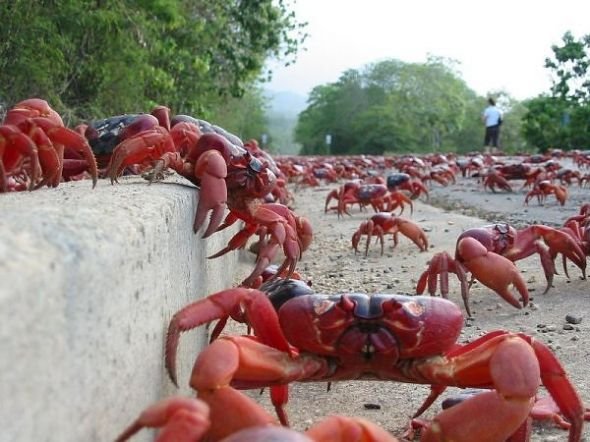
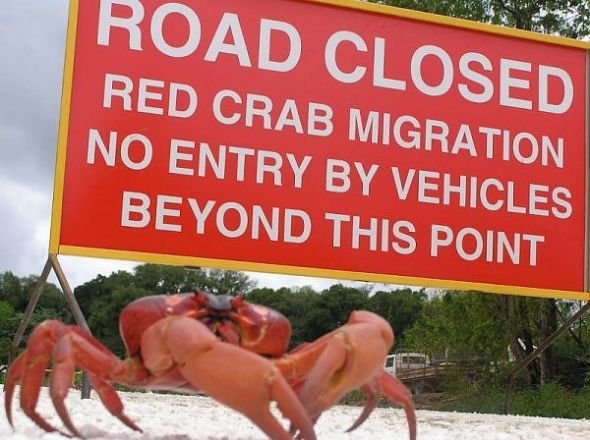
See? I told you we have the right of way!
Every year one of the most spectacular migrations in nature occurs on Christmas Island, when over 150 million red crabs move from inland shelters to the shore for their annual breeding season.
At the beginning of the wet season (usually October / November), Red Crabs suddenly begin a spectacular migration from the forest to the coast, to breed and release eggs into the sea. Breeding is usually synchronized island wide. The main migration commences on the plateau and can last up to 18 days.
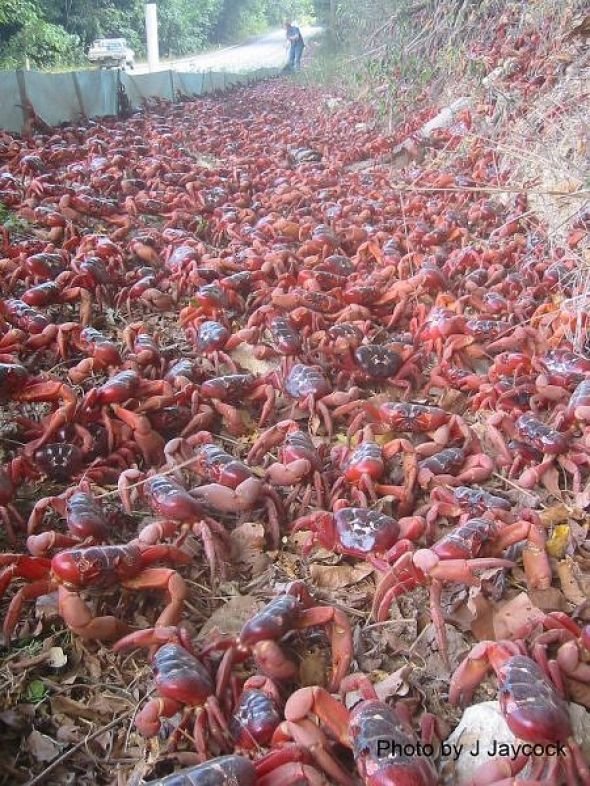
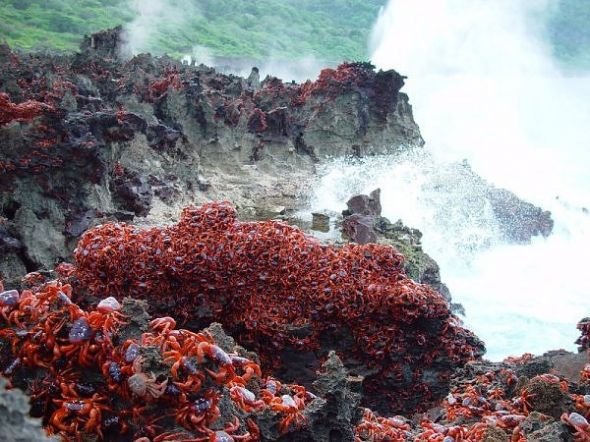
After about a month in the ocean, and after growing through several larval stages, the surviving larvae have developed into prawn-like animals called megalopae. The megalopae gather in pools close to the shore for 1-2 days before changing into young crabs and leaving the water.
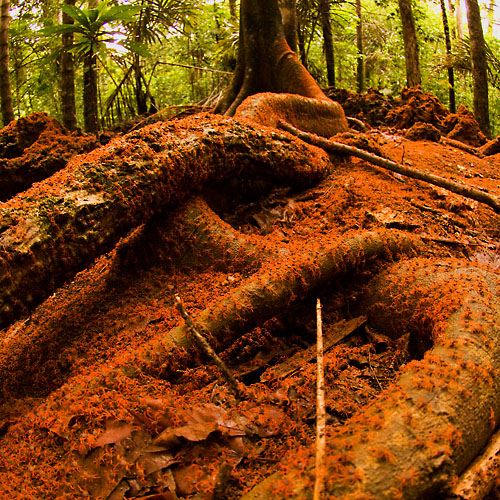
Video: To see a video of the migration, made by Reality TV,
click here .
FEEDBACK MAP
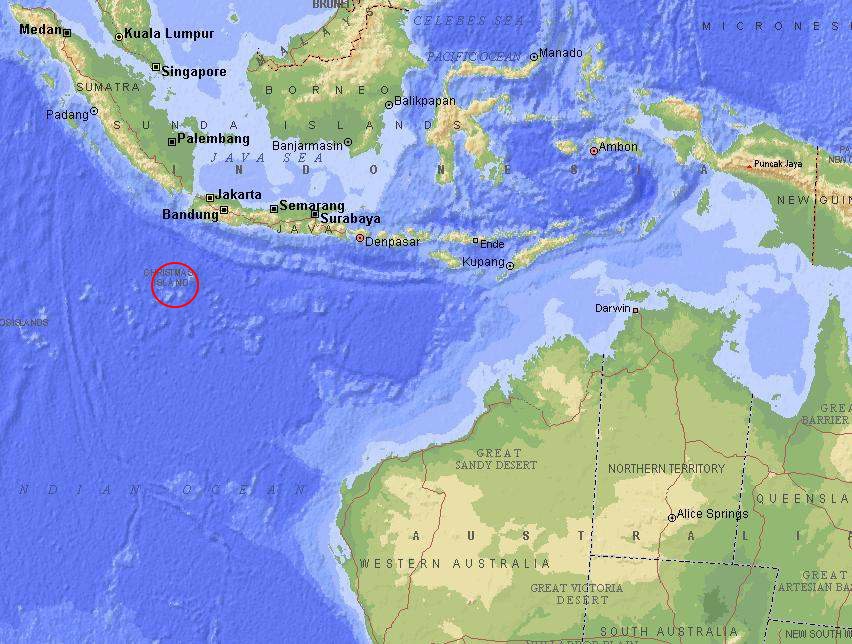
Christmas Island got its name when Captain William Mynors became the first European to see it -- on December 25, 1643.
If you got information which is not covered by this feedback, you can gain more feedback at the following web sites:
The Christmas Island Tourism Association
Travel Articles for Publishers
Fun on the net (Pictures)
Crazy Topics Web Page (for whom we owe thanks for much of this matierial)